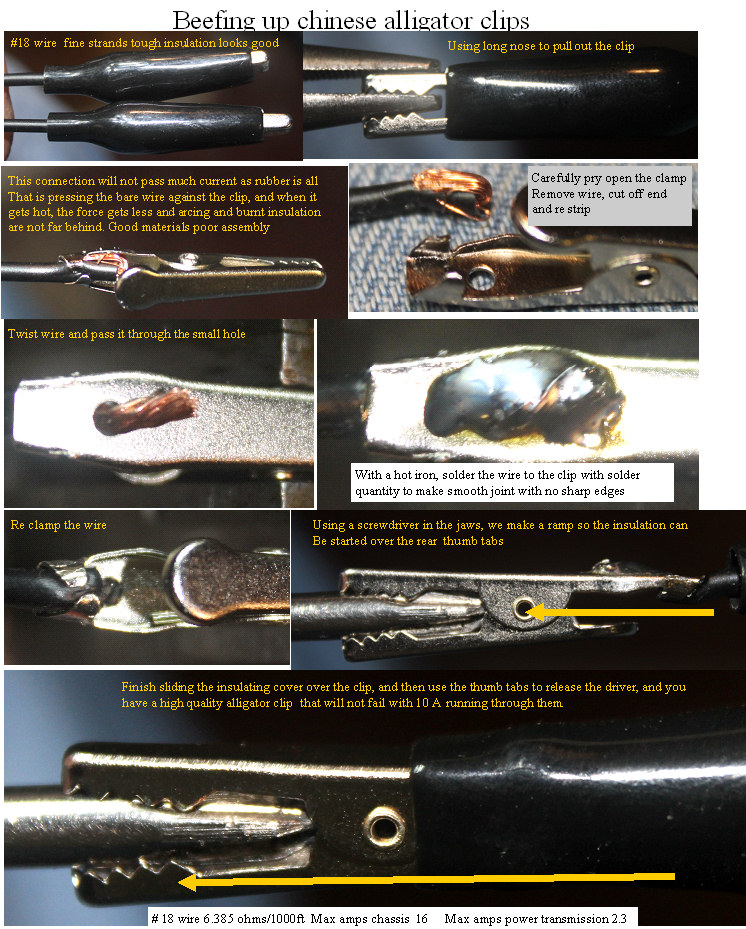Where do you find high quality alligator clips?
|
 | |
|
beefing up some clips for high current
|
I wanted a quantity of alligator clips that could handle currents in the 10 A range, and bought some nice looking ones with # 18 wire. As I usually do with chinese made products, I always want to see if the product is made well or if some shortcuts have been taken in materials or workmanship.
I removed one end with a trick I learned many years ago.
You put a large diameter shaft (phillips driver) into the clip, which makes the shape like a ramp, so the insulating cover can be slid off, and then back on.
In this case, I used some long nose pliers to force the jaws open, so I could grab the jaws to pull off the cover. The deeper you go with the pliers the better the ramp and the easier the covers slides back.
One look at the connection, and I knew that this clip, despite the nice wire and tough clip, was not going to pass the current that the wire should comfortably handle. The bare copper was not crimped metal to metal, instead they crimped it with the rubber, which while capable of handling an amp or so, if we start passing 5- 10 A, the joint would rapidly heat up and soften the wire insulation, and thus decrease the clamping force, which would raise the joint resistance, which would raise the temperature in a death spiral that would end with fire.
My investment would be wasted if I did not fix this only weakness in an otherwise good product for a fair price.
I carefully pried open the two clamp pins
Cut of the mangled end of the wire and make a new strip.
twist the fine strands, pass through the hole from the inside
Solder the wire to the clip with a heavy iron so the heat does not have time to heat the spring in the clip and soften it
The solder joint wants to present a smooth surface to the insulating cover, so flow in enough solder to form that surface
After the clip cools (blow on it to speed the process) bend the two clamps back over the insulation
Using the Phillips driver to create the ramp. slide the cover back into position,and you have a first rate alligator clip that can handle some high currents, and will last.
|
|